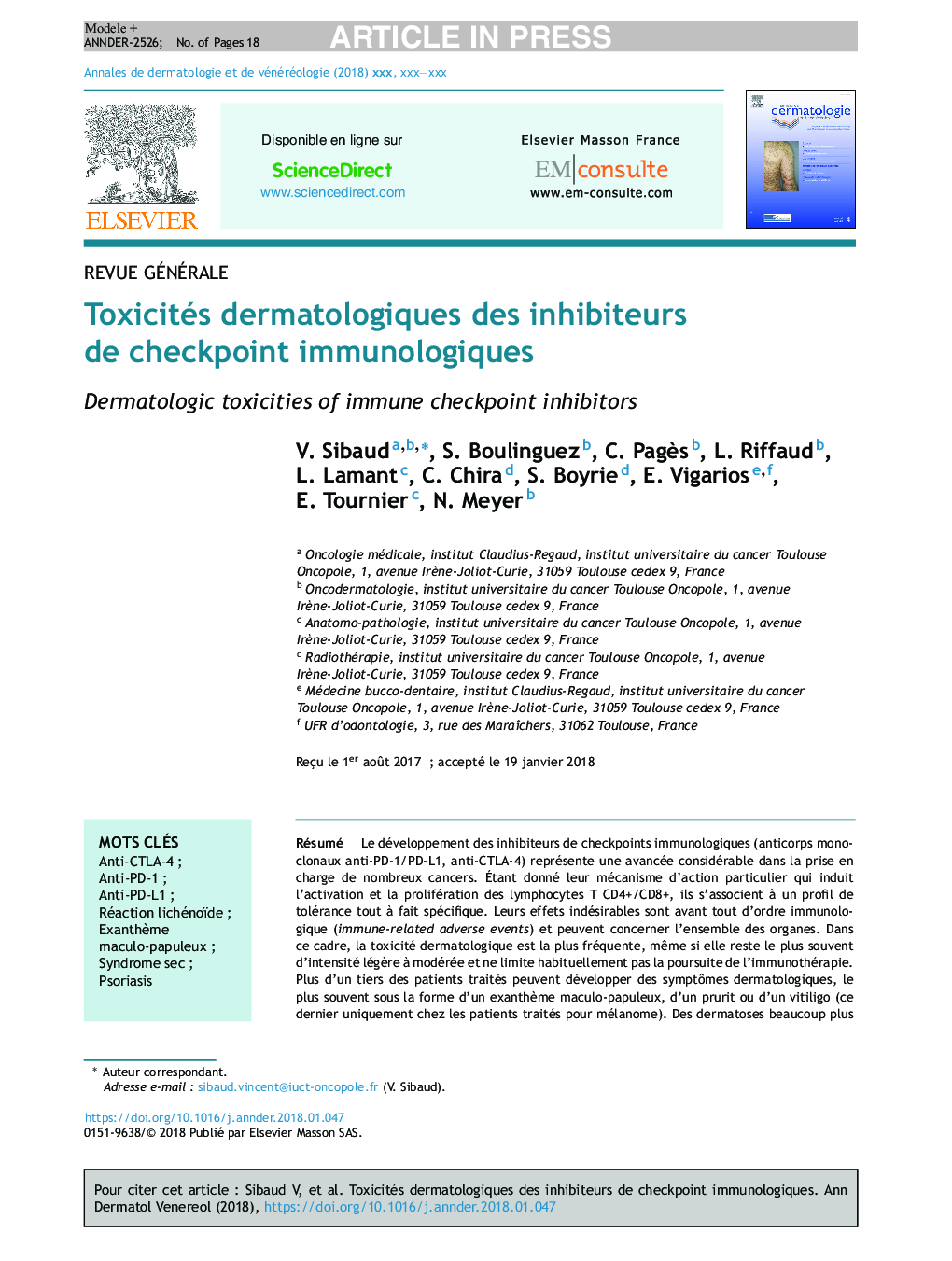| کد مقاله | کد نشریه | سال انتشار | مقاله انگلیسی | نسخه تمام متن |
|---|---|---|---|---|
| 8710912 | 1586599 | 2018 | 18 صفحه PDF | دانلود رایگان |
عنوان انگلیسی مقاله ISI
Toxicités dermatologiques des inhibiteurs de checkpoint immunologiques
دانلود مقاله + سفارش ترجمه
دانلود مقاله ISI انگلیسی
رایگان برای ایرانیان
موضوعات مرتبط
علوم پزشکی و سلامت
پزشکی و دندانپزشکی
امراض پوستی
پیش نمایش صفحه اول مقاله

چکیده انگلیسی
The development of immune checkpoint inhibitors (monoclonal antibodies targeting PD-1/PD-L1Â or CTLA-4) represents a significant advance in the treatment of multiple cancers. Given their particular mechanism of action, which involves triggering CD4+/CD8+ T-cell activation and proliferation, they are associated with a specific safety profile. Their adverse events are primarily immune-related, and can affect practically all organs. In this context, dermatological toxicity is the most common, though it mostly remains mild to moderate and does not require discontinuation of treatment. More than a third of patients are faced with cutaneous adverse events, usually in the form of a maculopapular rash, pruritus or vitiligo (only in patients treated for melanoma). Much more specific dermatologic disorders, however, may occur such as lichenoid reactions, induced psoriasis, sarcoidosis, auto-immune diseases (bullous pemphigoid, dermatomyositis, alopecia areata), acne-like rash, xerostomia, etc. Rigorous dermatological evaluation is thus mandatory in the case of atypical, persistent/recurrent or severe lesions. In this article, we review the incidence and spectrum of dermatologic adverse events reported with immune checkpoint inhibitors. Finally, a management algorithm is proposed.
ناشر
Database: Elsevier - ScienceDirect (ساینس دایرکت)
Journal: Annales de Dermatologie et de Vénéréologie - Volume 145, Issue 5, May 2018, Pages 313-330
Journal: Annales de Dermatologie et de Vénéréologie - Volume 145, Issue 5, May 2018, Pages 313-330
نویسندگان
V. Sibaud, S. Boulinguez, C. Pagès, L. Riffaud, L. Lamant, C. Chira, S. Boyrie, E. Vigarios, E. Tournier, N. Meyer,